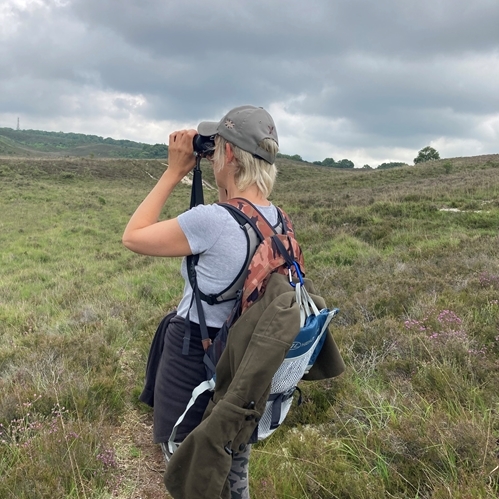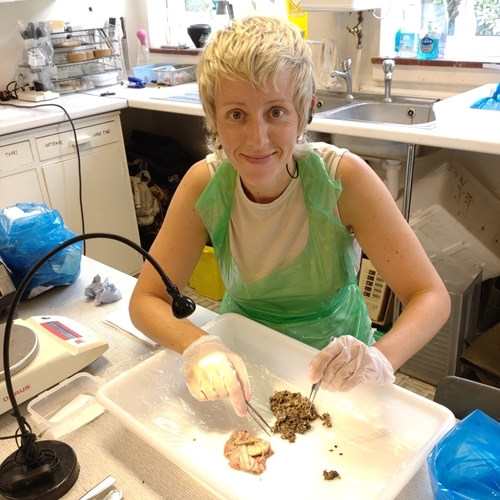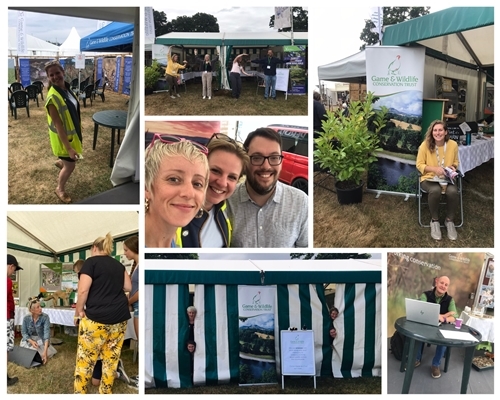As I mentioned in Part 1 of this series of blogs, working as a research assistant at the Game and Wildlife Conservation Trust (GWCT) gives me the opportunity to work on some incredibly exciting research. In early 2022 I joined the Trust’s Predation Control Studies team, where I am learning new skills from a range of new research challenges.
As a research team our current focus is on understanding why there are so many generalist predators in the UK and determining their impact on breeding waders in the New Forest National Park. Working alongside two PhD students, I have been supporting investigations into predator activity and fox diet. To date, this research has given me unforgettable wildlife encounters, opportunity to explore some beautiful habitats, to collect and manage valuable data, whilst also giving me the chance to speak to people on the ground about predation management.
To assist with our research, part of my role for the 2022 field season was to help build up a picture of avian predator activity in the New Forest National Park, an area which holds significant concentrations of breeding waders. As part of a wide team effort, wader nests were found by licenced professional conservationists, to monitor nest outcomes alongside predator activity. I assisted with our wader nest camera research programme, but also carried out nearly 100 avian predator surveys at different time periods from April to July. This helped to improve my skills as a field ecologist, whilst also providing me with a very personal experience of exploring the stunning landscape and wildlife of the New Forest.

Out on field work assessing avian predator activity. Photo credit: Vivienne Tomlin
Direct observation, however, is not the only way we are understanding the predation pressures facing breeding waders; our team is utilising laboratory methods to understand more about the ecology of the red fox, which is a prominent predator of ground-nesting birds.
To do this, we have been collecting fox fur and tissue samples, as well as fox stomachs for dietary analysis, through liaison with professional wildlife managers. These samples and methods can tell us more about the genetic structure of the fox population and the food resources contributing to population growth.
In our laboratory, I am tasked with managing and cataloguing our store of samples and this year I was also given the responsibility of processing the 450 fox stomachs donated to our research program. A fox’s diet is very varied, so it was common to find prey items such as birds, insects, rabbits, squirrels, small mammals, and reptiles throughout the stomach samples, but we also found a high proportion of anthropogenic foods, such as curry, chips, pasta, fish pie and vegetables. This finding is contributing to our on-going interest in how human activity may be influencing the abundance and behaviour of various predators in the landscape.

Fox stomach analysis in our predation research laboratory. Photo credit: Mike Short
My extensive and exciting 2022 field season was culminated by sharing our predation research work alongside other Trust projects at various countryside events around the UK. Preparing displays and communicating our science to a wide audience is something I have always enjoyed during my time at the Trust, highlighting the unique research we carry out alongside land managers.
During the summer of 2022, I was able to attend the New Forest Show and an Open Farm Sunday event with my wonderful colleagues, talk to children about the Trust’s Owl Box Initiative project at the Scottish Game Fair, and display our methods of predator monitoring at the English Game Fair in Warwickshire; it was certainly a busy few months!

Working hard and having lots of fun with colleagues at countryside events
I’m exceptionally lucky and proud to be able to represent the Game and Wildlife Conservation Trust at these events and am always delighted at the positive interactions with the general public when they find out more about our research.
My last blog in this series will look at the final part of my year and how I have been given the role of sharing more widely, the interesting and hard work carried out by all our GWCT research teams from across the UK...